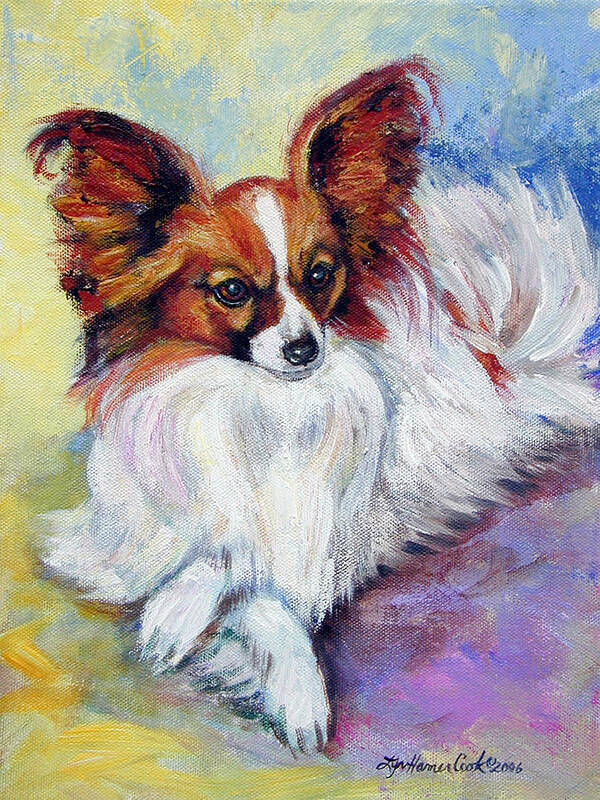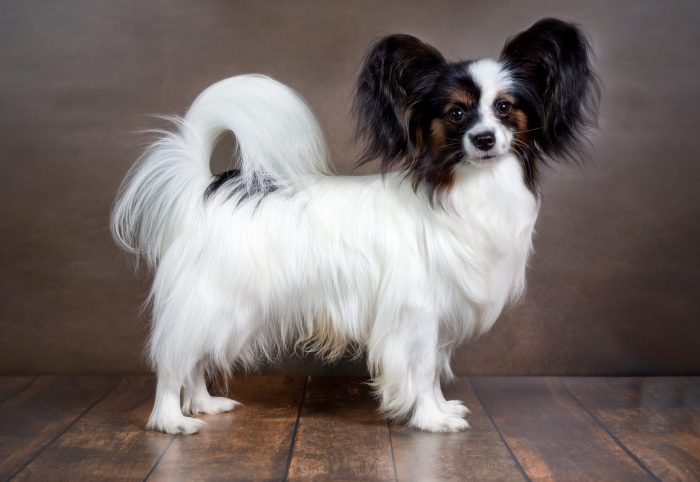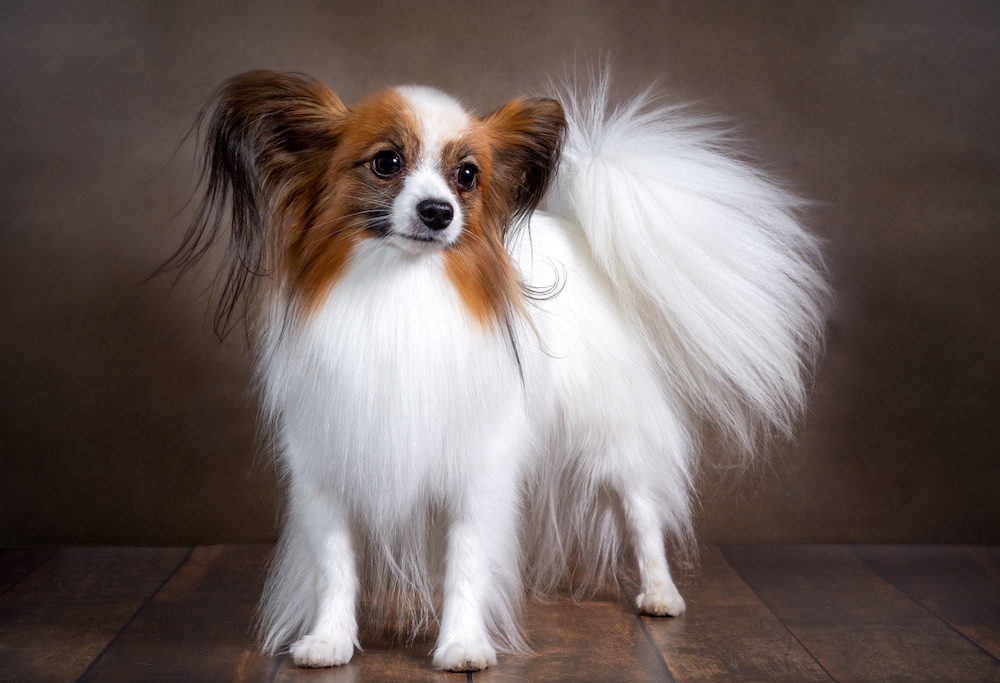
Below are two photographs of two different Papillons, each taken by the same photographer, Svetlana Akifyeva, for Vecteezy. While we lack the expertise in evaluating either in a show ring as a judge would, there is one difference between them that *may* fall short of the breed standard (emphasis put on the word, “may”). Can you spot it?
↓
↓
↓
↓
↓
↓
↓
↓
↓
↓

Papillon by Svetlana Akifyeva

Papillon by Svetlana Akifyeva
We’ll help you out by bringing to your attention one particular sentence from the AKC breed standard: Hair on feet is short, but fine tufts may appear over toes and grow beyond them, forming a point. Because this grooming style leaves a tuft of hair over the foot that resembles a rabbit’s foot, it’s called (wait for it) a “rabbit foot’s tuft.” The paws of the dog in the first photo exhibit this, but the feet of the dog in the last photo are trimmed and neatened.
We caution that the word, “may,” hints that grooming for a rabbit’s foot tuft is not a requirement, but a suggestion. Certainly it’s not commonly found in many grooming books such as the 2004 edition of Notes from the Grooming Table (though this may have been changed in more recent editions), but it’s mentioned in many breed specific forums and columns we visited on-line. We paraphrase one example we found that offered instruction:
The feet should be trimmed to a taper, with the longer strip at the toes, so as to resemble the foot of a rabbit with a tuft of hair coming to a point in the front of the foot. If this hair is missing, the dog’s paw will more resemble a cat’s foot. When trimming, start at the back of the foot and work forward, leaving the shaping of the toe tuft for last. Scissor along the line where foot pads and hair meet and cut along the natural line of the paw. Snip hair from the back of the paw to the last toenail, and then trim the hair between the last toenail and the part behind the toe tuft. Both sides of the paw should be done before dealing with the toe tuft, and when shaping that tuft of hair, aim for a nicely shaped triangle.
A random bit of trivia: Other breed standards do mention longer hair on the feet. For example, from the Pekingese standard: “Long feathering is found on toes, backs of the thighs and forelegs, with longer fringing on the ears and tail.” As of this writing, however, the Papillon has the only AKC breed standard in which “tuft” is mentioned with regards to hair on the feet. While tufts may not have a functional purpose, they add to the overall appeal of the Papillon by enhancing their elegance – and ultimately – breed type.
Top image: “Elegance” Lyn Hamer Cook from DogArtByLyn
www.facebook.com/PetArtbyLyn
www.petart.net
www.corgiart.net
